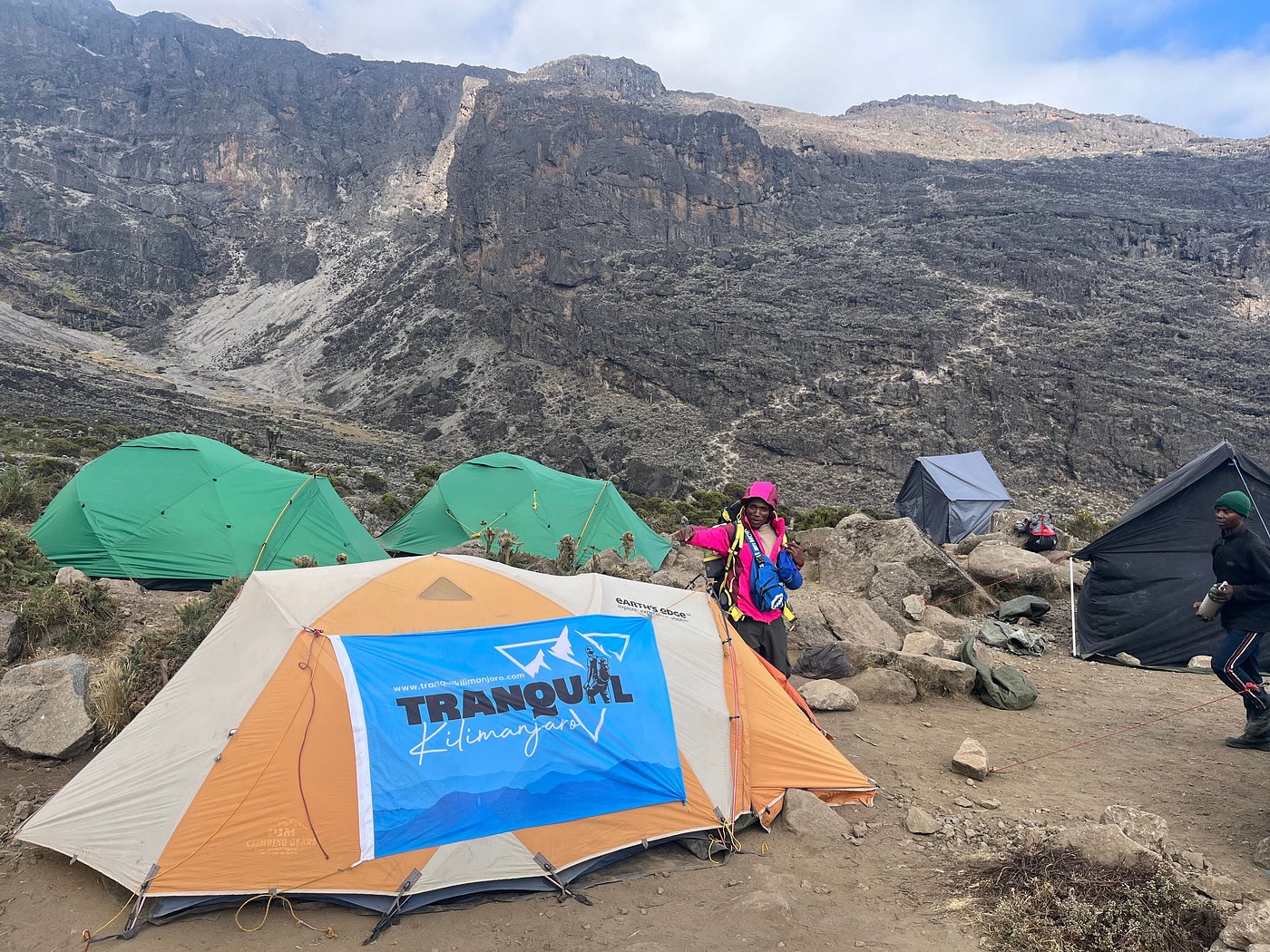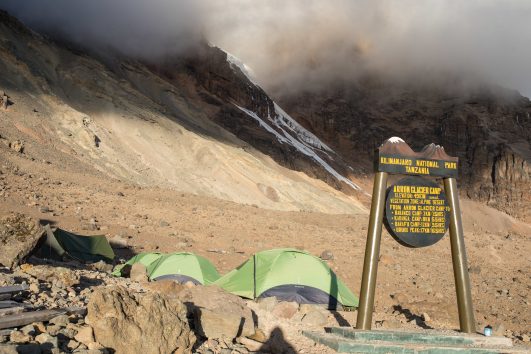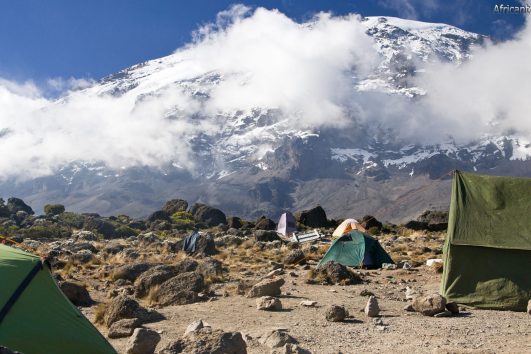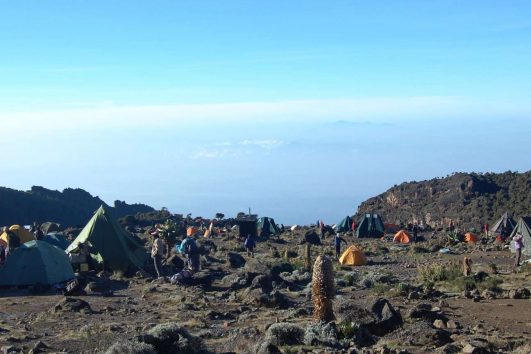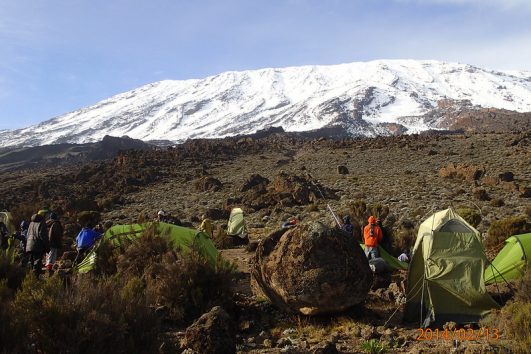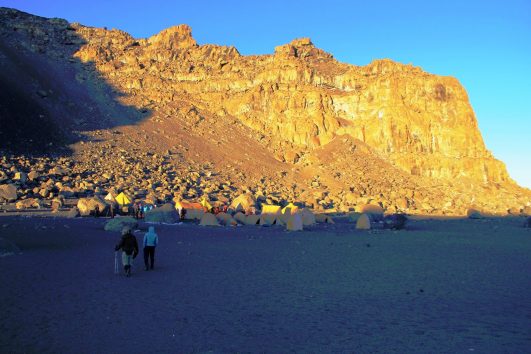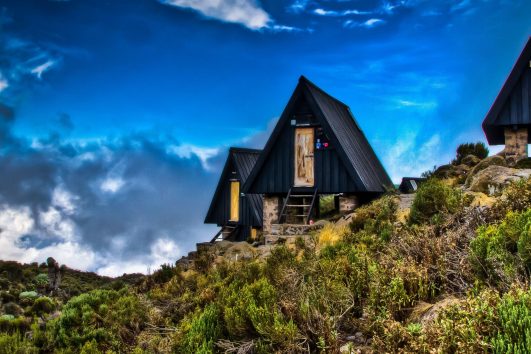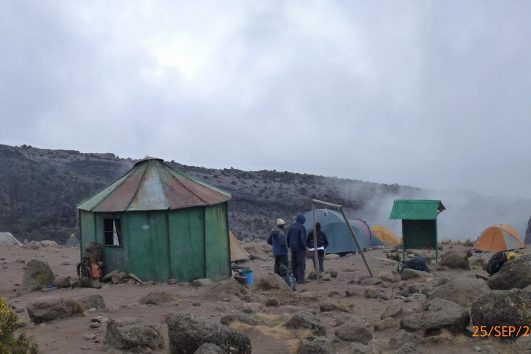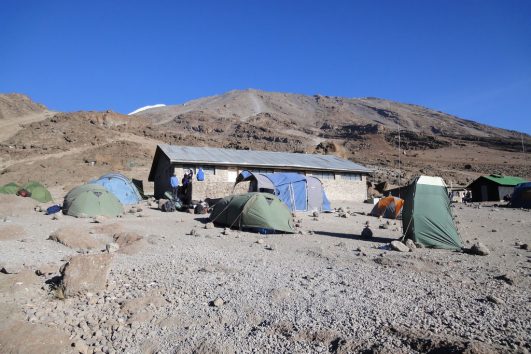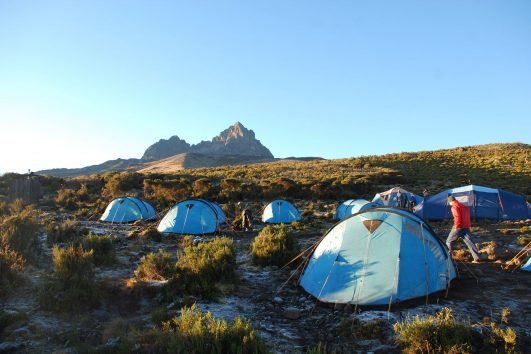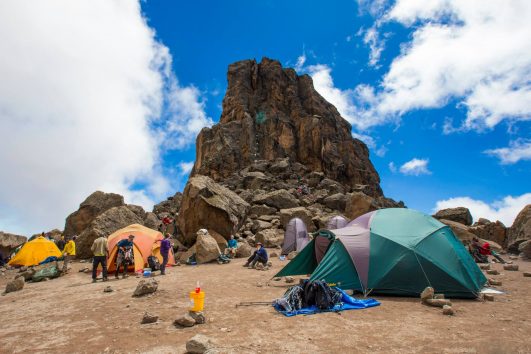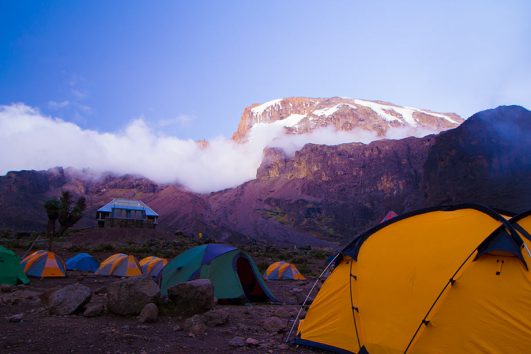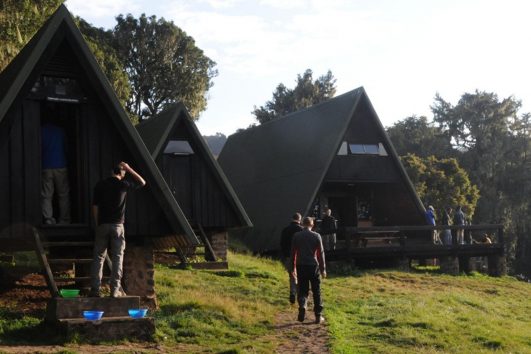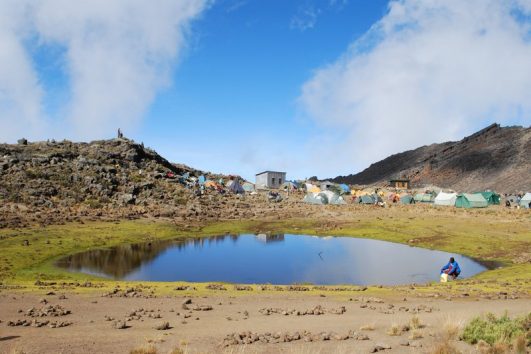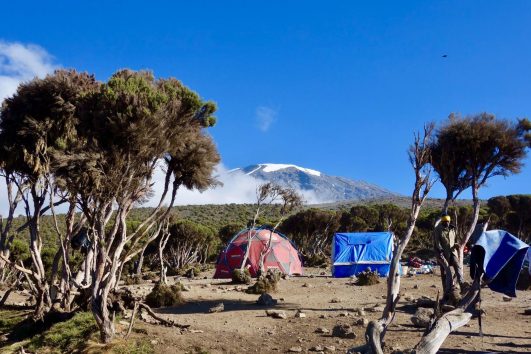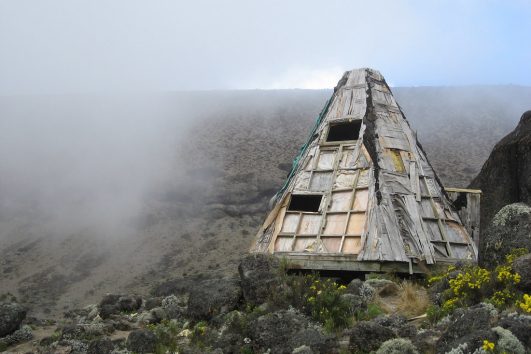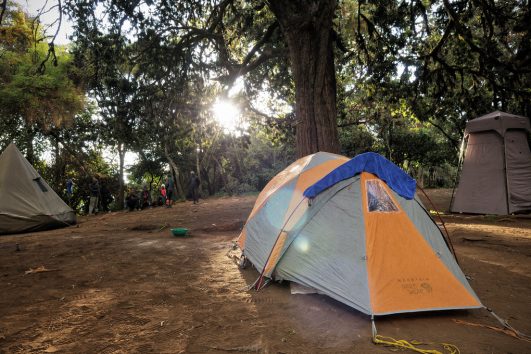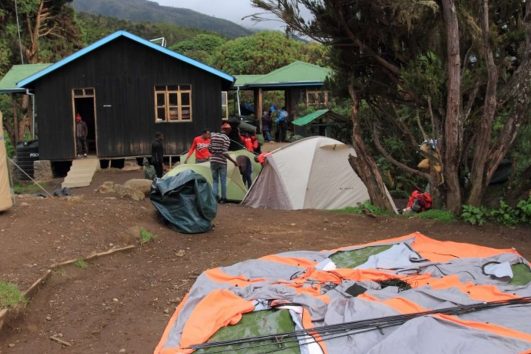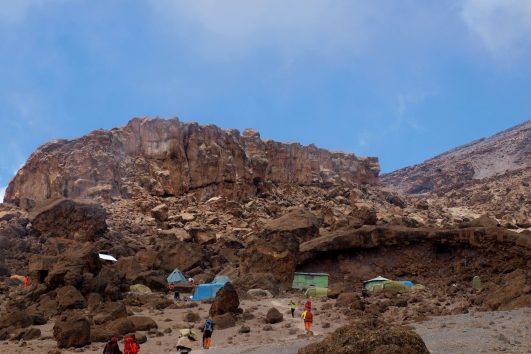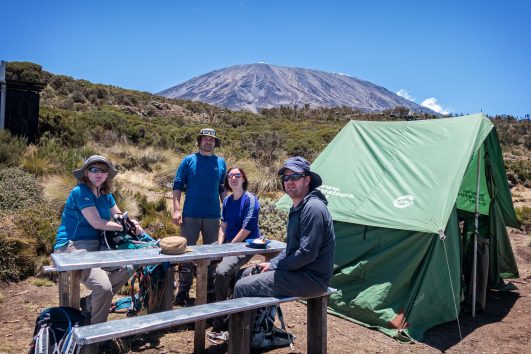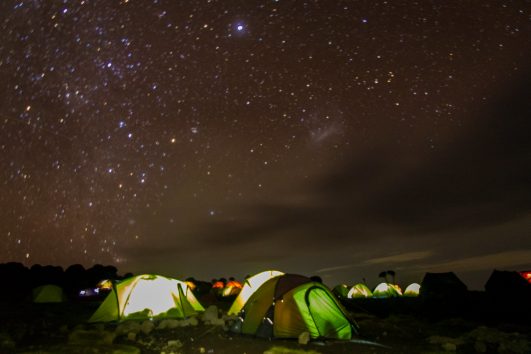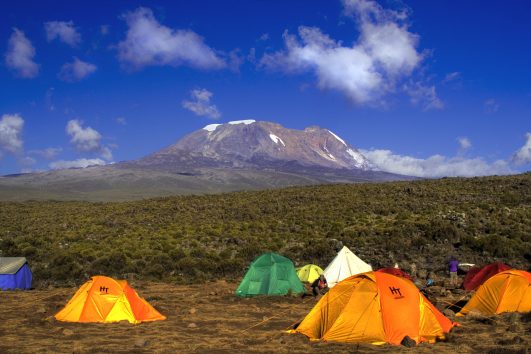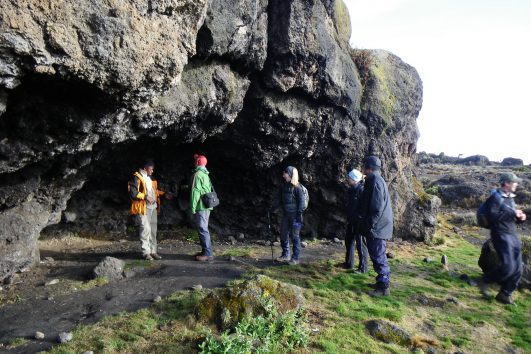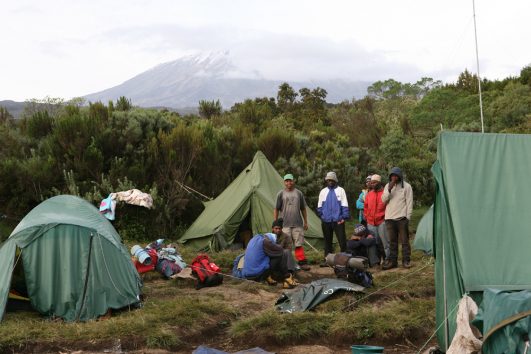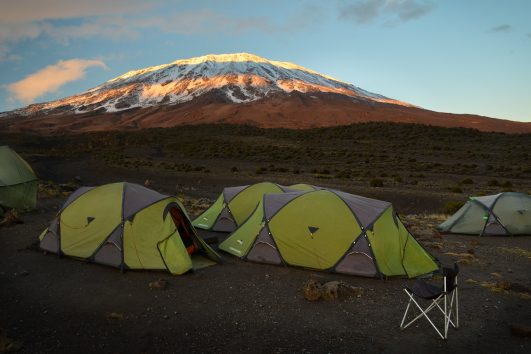Accommodation while climbing Mount Kilimanjaro is either in tents set up at public campsites on the mountain or in huts and everything is pretty much basic. There are three forms of accommodation on the mountain namely, tents, huts, and caves. The majority of the routes use tents as the preferred way of accommodation apart from the Marangu route which is the only route that you will entirely use huts to sleep in. At the Marangu route, tents are not allowed or used. Caves are an old way of accommodation that was used in the past before structures were erected on Mount Kilimanjaro. Caves are no longer in use and are forbidden by the park regulations. The other routes, namely, Shira, Rongai, Machame, Northern Circuit, Umbwe, Western Breach, Lemosho and Kilema biking route, use camping accommodation.
Camping on Mount Kilimanjaro and the tents.
It is the duty of the porters to carry your tents. Every morning on Mount Kilimanjaro, the porters pack and carry your tents through the rest of the day, then finding the designated campsites according to your route to pitch camp and prepare your evening meals and bathwater before you arrive at the campsite after your trek for the day.
